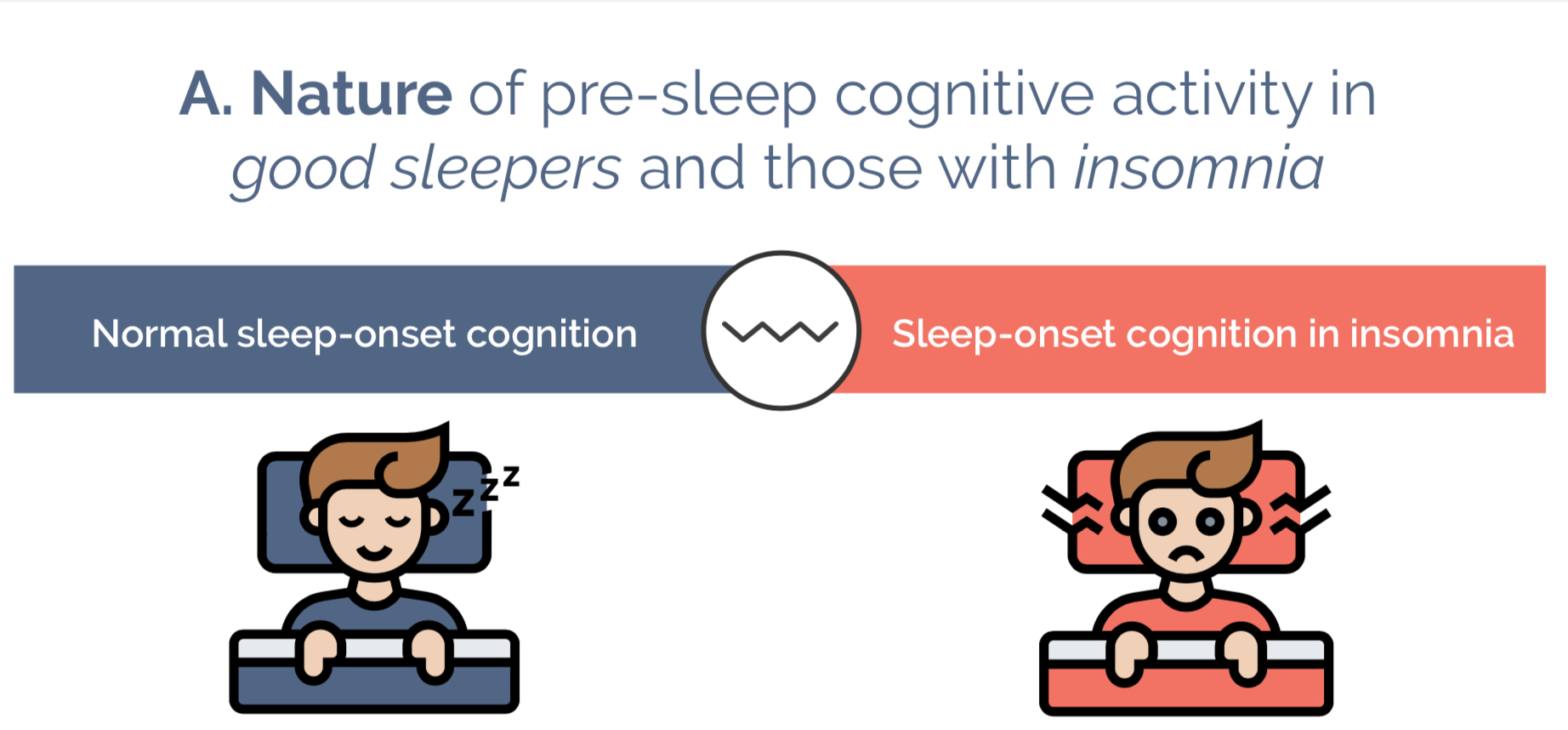(How) can bedtime thinking affect falling asleep?

We’ve created the infographic (below) to help you quickly grasp our recent paper, “Pre-sleep cognitive activity in adults: A systematic review” (published earlier this month in Sleep Medicine Reviews).
The infographic below and paper address the following questions
a. What kind of “thinking” goes on at bedtime?
b. What kind of “thinking” is associated with somnolence? What kind is associated with insomnia?
c. What are the actual effects of cognitive strategies that are supposed to promote sleep onset?
d. How can research in this area be improved?
Why is this important?
Clinical insomnia, and insomnolence more generally, are very significant societal concerns. Compounding the problem is that medications that are supposed to facilitate sleep have adverse side-effects.
It is commonly believed that the kind of thinking one engages in at bedtime (such as worrying) can delay sleep. This assumption, however, cannot simply be taken for granted. It needs to be determined scientifically whether (a) some types of mentation are insomnolent (can delay sleep), (b) some are counter-insomnolent (can counter insomnolent patterns), and/or (c) some are pro-somnolent (inherently promote the onset of sleep). It is also critical to know whether the effects of thinking on sleep-onset depend on the individual and/or the circumstances.
This is the path for a research basis for non-pharmaceutical, cognitive strategies to promote sleep onset that can be used in bed.
In fact, several strategies have been proposed and subjected to empirical scrutiny. Our paper reviews the state of the science, and how it can be improved.
Tax payers fund some of the research on sleep, with an expectation that it will lead to better scientific and hopefully improve sleep wellness. They also expect regularly to be apprised of research progress and its practical implications — explained in a way that does not put them to sleep 🙂 . So we created a beautiful, stimulating infographic for you.
The need for theory and innovation
Our article and infographic emphasize the need for a deep understanding (theory) of the mechanisms by which thinking affects sleep onset. Empirical research must be grounded in such theory. It suggests particular directions for deepening scientific understanding of these problems in terms of the human sleep-onset control system.
In our infographic and our recent World Sleep Congress poster, we emphasize the need for a broad and deep Artificial Intelligence approach to sleep in particular, and mental phenomena in general. That is the integrative design-oriented (“IDO”) approach to mind (cognitive science).
References
Target article:
Lemyre, A., Belzile, F., Landry, M., Bastien, C., & Beaudoin, L. P. (2020). Pre-sleep cognitive activity in adults: A systematic review. Sleep Medicine Reviews, 50, 1-13.
Other references:
- Infographic available at Simon Fraser University (in PDF and JPEG formats) at: Beaudoin, L. P. & Lefurgey-Smith, L. (2020). Infographic about Pre-sleep cognitive activity in adults: A systematic review, 2020 (Sleep Medicine Reviews 50) | Summit.
-
Beaudoin, L. P., Lemyre, A., Pudlo, M. & Bastien, C. (2019). “Towards an integrative design-oriented theory of sleep-onset and insomnolence from which a new cognitive treatment for insomnolence (serial diverse kinesthetic imagining, a form of cognitive shuffling) is proposed.” Poster presented at the World Sleep Congress 2019. Vancouver, BC.
The infographic itself

